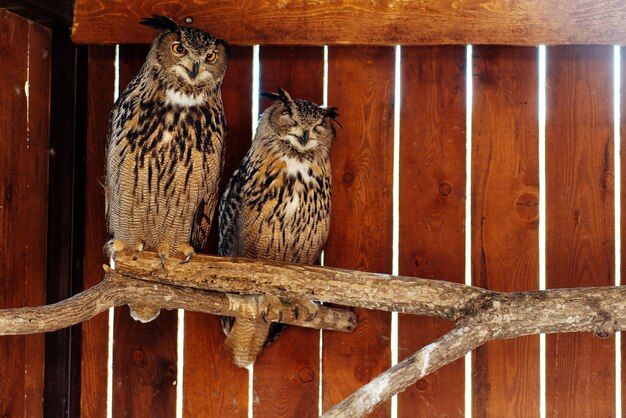The long-eared owl, Asio otus, is a creature that captivates observers. Often, it’s the seemingly simple question, “Why do they have such prominent ear tufts?” that initiates a deeper fascination. However, the answer lies far beyond mere aesthetics. The adaptations of this nocturnal predator are a testament to evolutionary pressures, showcasing a remarkable suite of features that enable survival in diverse environments. These adaptations are not just superficial; they are deeply integrated into the owl’s morphology, physiology, and behavior.
I. Auditory Acuity: Beyond the “Ears”
The namesake “ears” of the long-eared owl are, in reality, feather tufts. They play absolutely no role in hearing. The true auditory marvel lies in the owl’s asymmetrically placed ear openings. One ear is positioned higher than the other. This seemingly minor disparity creates a significant advantage in sound localization. The offset allows the owl to perceive subtle differences in the timing and intensity of sound reaching each ear.
This binaural hearing is critical for pinpointing the precise location of prey, even when hidden beneath snow or dense vegetation. The owl’s brain processes these minute auditory cues with extraordinary precision, constructing a three-dimensional “sound map” of its surroundings. Imagine trying to locate a mouse scurrying beneath several inches of snow, guided only by sound. This adaptation is nothing short of extraordinary, highlighting the evolutionary perfection of these animals. The external ear flaps, or opercula, are also highly specialized, acting as parabolic reflectors that funnel sound waves towards the tympanic membrane.
II. Cryptic Plumage: The Art of Invisibility
Blending seamlessly into its surroundings is paramount for both predator and prey. The long-eared owl’s plumage provides exceptional camouflage. Its mottled brown, gray, and black feathers mimic the patterns of tree bark and foliage. This cryptic coloration allows the owl to remain virtually invisible during the day, when it typically roosts in dense woodlands. This is particularly important given their nesting behaviors. Nests are often in the open, in old hawk nests, or squirrel dreys.
The disruptive coloration breaks up the owl’s outline, making it difficult for potential predators, such as hawks or eagles, to spot it. Furthermore, the intricate patterns provide effective camouflage even in varying light conditions. The owl’s ability to seemingly disappear into its environment is a testament to the power of natural selection. These are some of the best camouflage animals in the world.
III. Specialized Flight Feathers: Silent Hunter
The long-eared owl is renowned for its virtually silent flight. This remarkable adaptation is achieved through specialized modifications to its flight feathers. The leading edges of the primary feathers are serrated, forming comb-like structures. These serrations break up the flow of air over the wing, reducing turbulence and minimizing the sound produced during flight. Further contributing to silent flight are the soft, velvety surfaces of the feathers, which absorb sound rather than reflecting it. This combination of features allows the owl to approach its prey undetected, increasing its hunting success rate. Think of a velvet covered stealth bomber. These adaptations contribute to the owl’s mastery as a nocturnal hunter.
IV. Talons and Beak: Instruments of Precision
Once prey is located, the long-eared owl employs its formidable talons and beak to secure and dispatch its meal. The talons are incredibly strong and sharp, designed to pierce and grip prey with immense force. The zygodactyl foot arrangement – two toes pointing forward and two pointing backward – provides a secure grip, ensuring that the prey cannot escape. The beak is sharply hooked and powerful, perfect for tearing flesh and consuming its catch. This predatory toolkit is highly effective for capturing and consuming small mammals, birds, and insects, and other assorted prey.
V. Dietary Adaptations: Pellets and Prey Specialization
Like many owls, the long-eared owl regurgitates indigestible portions of its prey in the form of pellets. These pellets contain bones, fur, feathers, and exoskeletons. Analyzing these pellets provides valuable insights into the owl’s diet and the composition of its local ecosystem. This information is valuable for scientists and conservationists. Understanding their diet is critical to understanding their habitat.
The long-eared owl exhibits some degree of prey specialization, often focusing on voles as a primary food source. However, its diet can vary depending on the availability of prey in different regions and seasons. This dietary flexibility allows the owl to thrive in a range of habitats. The diet of these owls is important in helping to regulate populations of other small animals.
VI. Behavioral Adaptations: Nocturnal Lifestyle and Roosting
The long-eared owl is primarily nocturnal, active mainly during the night. This behavior allows it to avoid competition with diurnal birds of prey and take advantage of the increased activity of nocturnal prey. During the day, the owl typically roosts in dense vegetation, where it is well-camouflaged. Communal roosting is also a common behavior, particularly during the non-breeding season. These communal roosts can provide safety in numbers and facilitate social interactions.
VII. Adaptability and Range: A Widespread Success Story
The long-eared owl is one of the most widely distributed owl species in the world, found across North America, Europe, Asia, and parts of Africa. This widespread distribution is a testament to its adaptability and ability to thrive in diverse habitats. This owl is a testament to resilience.
This species can occupy a wide range of habitats, including grasslands, woodlands, and even urban areas. This adaptability makes it an important player in various ecosystems. The owl is one of the animals that can live in many different habitats.
In conclusion, the adaptations of the long-eared owl represent a fascinating example of natural selection at work. From its asymmetrically placed ears to its cryptic plumage and silent flight, every feature is finely tuned for survival. It’s more than just a captivating creature; it’s a living embodiment of evolutionary ingenuity.
